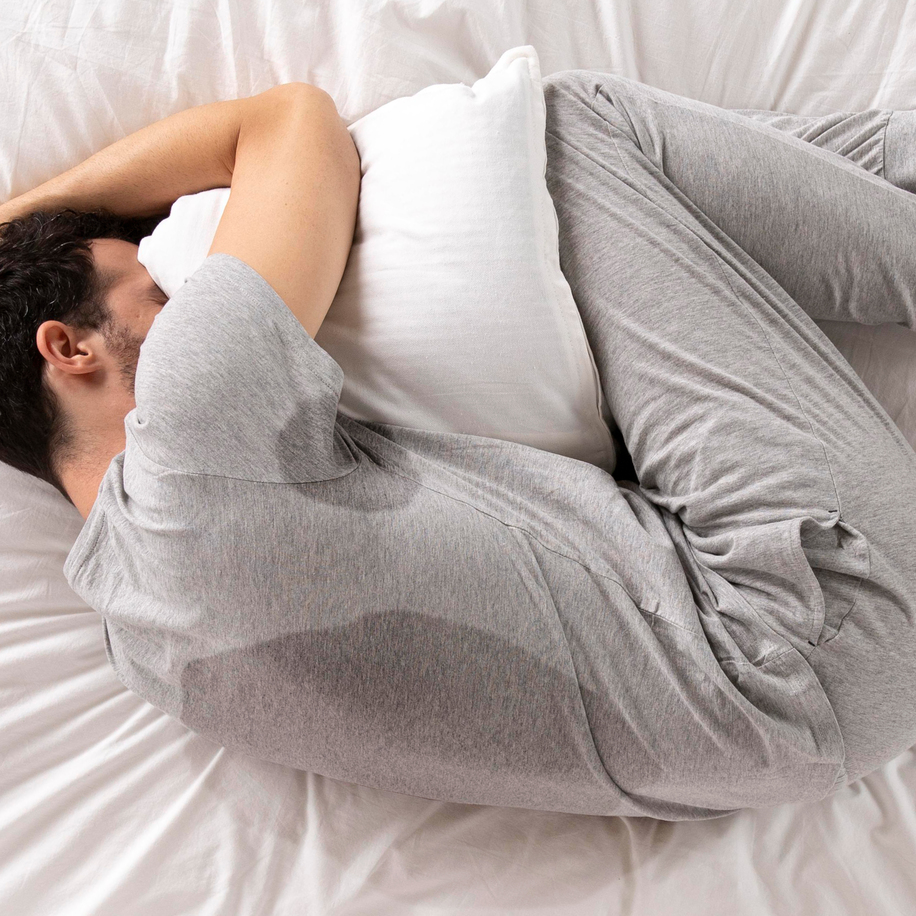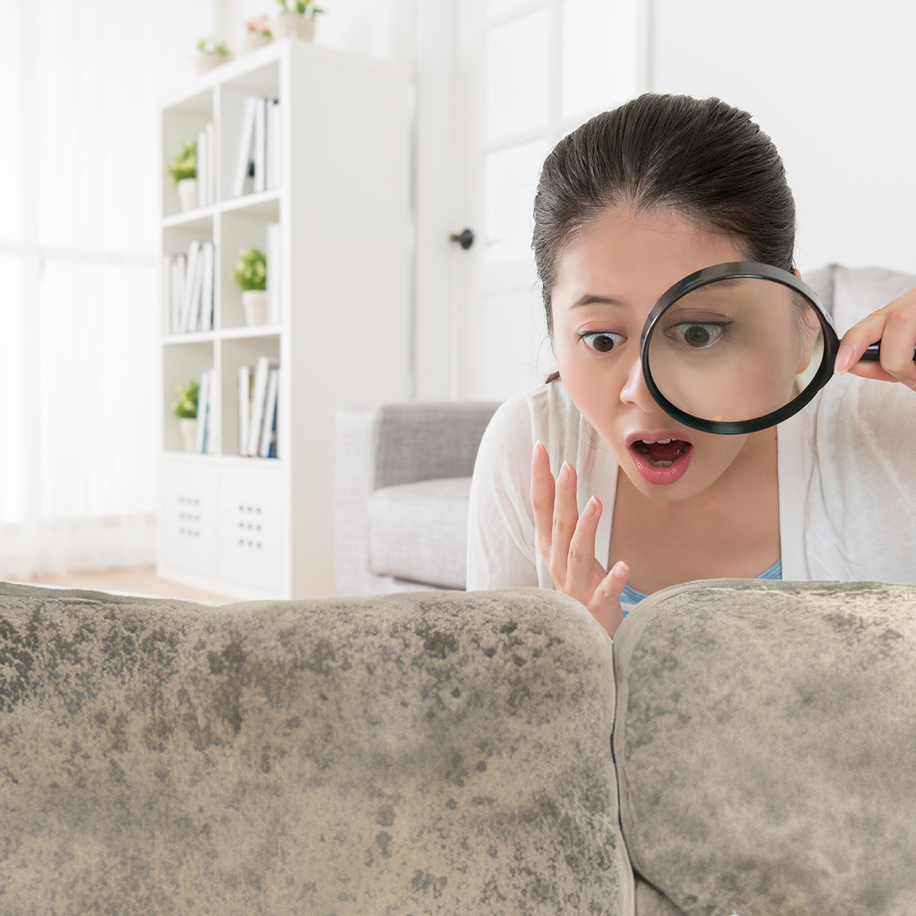Breaking the Mould: Stop the Growth of
Harmful Fungi at Home
Table of Contents:
Not only is mould unsightly, it also poses a health risk that affects up to 50% of households in places such as Australia, India, Japan, North America and Europe.1
But what is this widespread fungus and why is it a problem? Read on to learn more.
What is Mould?
Mould is a type of fungus that contains seeds called ‘spores’, which are spread by air or by sticking to objects and people as a means of reproduction.2
These microscopic seeds are invisible to the naked eye, and they enter our homes, adhering to wet surfaces, causing fungus growth.
While typically found in nature – mould is essential for breaking organic matter – it can also crop up at home since all it needs to thrive is a warm, humid environment.3
Outdoor mould is unavoidable since spores spread all year round in windy weather and rainy or foggy seasons.
You’ll typically find mould on fallen leaves that you tread on, the fallen logs by an old tree, compost piles in your own backyard.
Indoors, mould rears its head when spores enter through openings, or are carried by pets and people.
Familiar hotspots for mould are humid and damp places such as:
- bathroom
- storage spaces
- kitchen cabinets
- areas under sinks
Type of mould?
At home, the most common types of mould you’ll find at home are:4
- Penicillium
◦ Found in soil, the air, and decaying vegetation, this fungus is typically blue or green. - Cladosporium
◦ Presents itself in green, brown or black colonies and can worsen asthma symptoms and sinus infections5 - Aspergillus
◦ Soft or powdery in texture, this colony of fungus can differ in colour, but is mostly pale-yellow. - Alternaria
◦ Occurs in damp places such as showers and are dark grey-green.
Mould on surfaces
When mould grows on walls or furniture, it compromises the structure of the objects, leaving your surroundings in tatters.
The usual suspects of a mould infestation are water leaks or floods that dampen surfaces such as walls covered with wallpaper, floor tiles, wooden panels, under carpets and also on books that are not stored correctly.
If presented with the right conditions, these microorganisms only need 24 to 48 hours to germinate and grow into visible mould within 18 to 21 days.6
How does mould affect your health?

Physical side effects
Thankfully, exposure to outdoor mould is not hazardous to humans but those with higher allergic tendencies can experience symptoms such as:7
- Eye irritation
- Coughing
- Dry skin
- Nasal congestion
But when mould occurs indoors – where you eat, sleep, and work– you risk prolonged exposure.
This can lead to side effects such as:8
- Prolonged coughing
- Wheezing
- Difficulty breathing
- Bronchitis
- Eye irritation
- Sinus
Ingestion of mould
Moulds like Aspergillus and Penicillium produce toxic compounds called mycotoxins which poison the body, cause cancer, and weaken immune systems.9
What's scary is that these fungi can grow on food like the cereals we eat for breakfast, the nuts we mix into our lunch salads, and the spices that make our dinner roasts so tasty.
Furthermore, mycotoxins have also been shown to cause cancer in animal species – meaning our fur babies are not safe from ingesting contaminated food either.
Psychological side effects
On top of the physical ailments listed above, long-term exposure to mould can also lead to psychological issues as well:10
- Depression
- Anxiety
- Sensitivity to light
- Exhaustion
- Unexplained weight gain
- Insomnia
- Confusion
Identifying a mould infestation

Sniff it out
One of the first and clearest signs of mould is what many describe as “musty” or “stale” odour suddenly wafting through your home.
Identify that the smell isn’t coming from an old carpet or dusty drapes. From there, locate the true source of the stench – which often leads you to mould.
You can also tell how advanced your mould problem by the intensity of the smell – a more pungent stench indicates that the fungus has had a lot of time to develop.
Look for discolouration
If you’ve ever seen your pristine-white walls at home or office turn a ghastly grey, you’ve likely run into a mould problem.
Many times, mould appears in the nooks and crannies of hard-to-see areas and upon closer inspection, you’ll notice patches of slimy, fluffy or powdery growth.11
So, dig deeper and leave no cushion unturned if you suspect you have a mould problem.
Preventing & removing mould
Preventing mould from taking over your home
When dealing with mould, the old adage that prevention is better than cure rings true. Here are a few ways to achieve this:
1. Keep humidity levels in check
Using an air conditioner or dehumidifier, keep the humidity level at home keep the humidity level at home ideally between 30%-60%
Use a home humidity sensor for a quick check, while some modern air conditioners come with one baked into its repertoire of features.
2. Ensure free-flowing air indoors
Excessive condensation introduces unhealthy amounts of moisture and humidity in any space, especially small ones.
Prevent this by ensuring air flows freely at home, which you can achieve by opening windows or installing ventilation systems.
3. Drying up moisture
If an area is wet when it shouldn’t be, you might have a leaking plumbing system – locate the source and tighten any pipes or faucets that may be causing the problem.
Floods are also a big cause of mould growth so if that happens, try to dry out every corner of your home within 24 to 48 hours.
Getting rid of mould in your home

Removing fungus growth can be a dangerous task, so it’s best to work cautiously. Here are ways to remove mould safely and effectively:
1. Gear up
Wear an N-95 respirator to avoid breathing in contaminants, and don items such as a pair of goggles, long-sleeved shirts, gloves, pants, and boots to minimise contact with your skin.
2. Cleaning liquids
Use bleach to clean floor tiles in your bathroom, or a mixture of water and white vinegar for other surfaces.
Detergent works best on fabrics but if an item is old or contaminated enough, it would be best to toss it out.
3. Calling the experts
When the old rag-and-vinegar method doesn’t work, it would be wise to not bite off more than you can chew.
Call in companies that specialise in mould inspection, removal and remediation services – they are properly equipped to treat mould, ensuring no harmful growths linger.
nanoe™ X helps to suppress mould growth at home

Speaking of experts, Panasonic has just the solution to lessen mould growth.
Equipped in a selection of air conditioner models, nanoe™ X is a technology that generates atomised water particles that contain hydroxyl radicals.
These hydroxyl radical-rich water particles are able to inhibit varieties of mould by denaturing mould proteins, thus hindering the growth of fungus.
nanoe™ X is able to bring down the survival rate of Cladosporium colonies by 99% in just one hour.12
Meanwhile, the Aspergillus’ – although resilient in nature – saw its survival rate plummet by 99.5% after 8 hours of coming into contact with nanoe™ X.
Mould growth can be dangerous when left untreated, but a well-equipped space can prevent the presence of fungus from the get-go.
Enjoy a safer home with nanoe™ X technology. Learn more about nanoe™ X technology here
1 https://www.ncbi.nlm.nih.gov/pmc/articles/PMC8835129/
2 https://www.epa.gov/mold/brief-guide-mold-moisture-and-your-home
3 https://www.ccohs.ca/oshanswers/chemicals/iaq/iaq_mould.html
4 https://www.cdc.gov/mold/faqs.htm
5 https://www.medicalnewstoday.com/articles/320331
6 https://greenorchardgroup.com/how-long-does-it-take-for-mold-to-grow/
7 https://en.wikipedia.org/wiki/Mold_health_issues
8 https://nlr.com.au/articles/mould-exposure-long-term-side-effects
9 https://www.who.int/news-room/fact-sheets/detail/mycotoxins
10 https://nlr.com.au/articles/mould-exposure-long-term-side-effects
11 https://greenorchardgroup.com/how-to-check-for-mold-in-your-house-or-apartment
12 https://www.panasonic.com/global/hvac/nanoe/all/how-nanoe-works/mould.html
Click here to contact us about products with nanoe™ X technology









